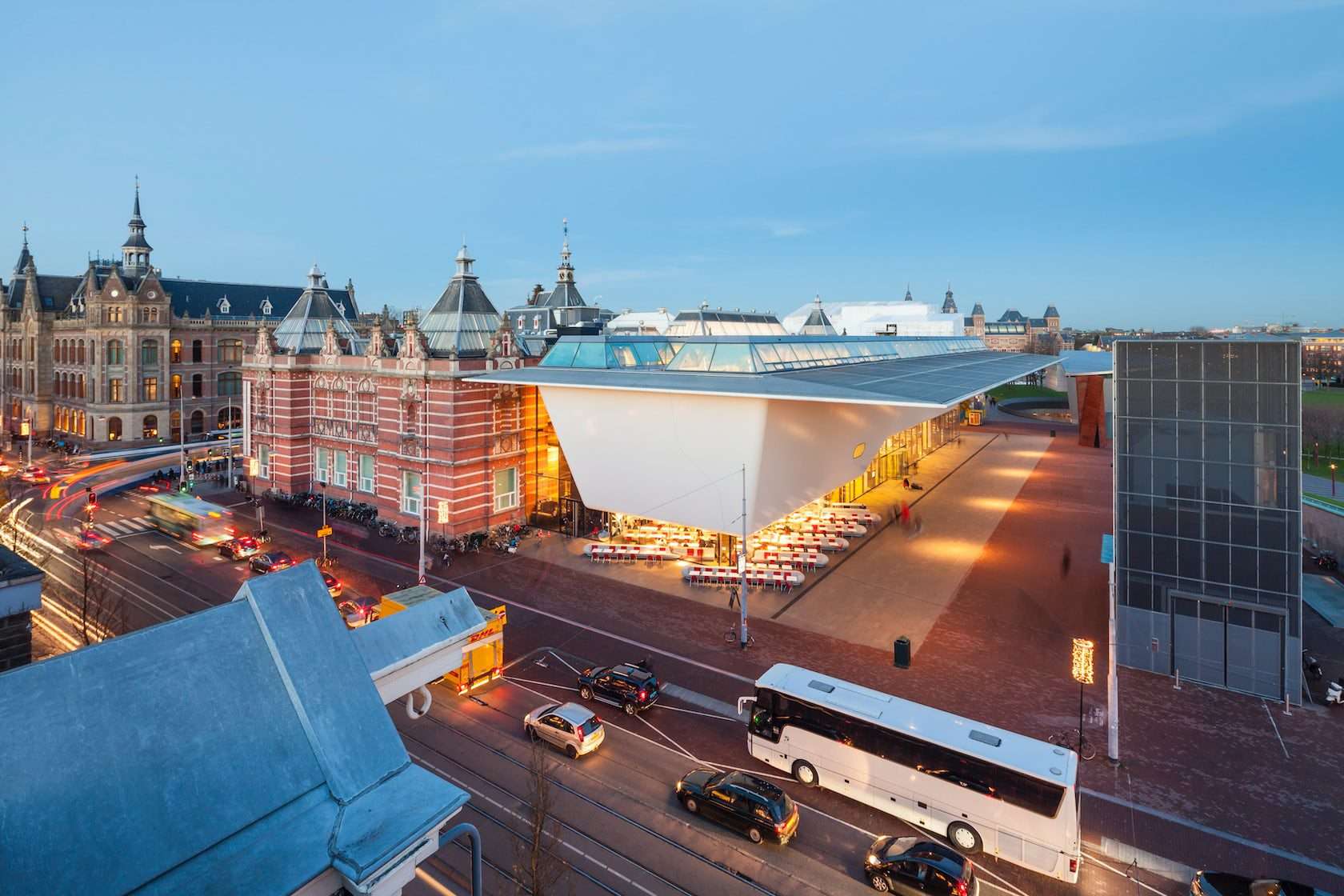Royal Ontario Museum (ROM) in Toronto needs no introduction. The building’s Italianate exterior and the quite literally edgy addition by Daniel Libeskind have given the building prominence along Bloor Street and Queens Park since it opened in 1914. This week the art museum, which prides itself as being Canada’s largest, announced OpenROM: a renovation plan headed by Hariri Pontarini Architects that will, according to the designers themselves, “reintroduce ROM to Toronto.”
Hariri Pontarini’s design scheme improves on what is already there with architectural interventions aimed at making the galleries and museum entrances more accessible and visible. Other renovations will add 6,000 square feet of galleries, create more public space, and add new water elements. The firm previously worked with the museum on a project that involved restoring the original Queens Park entrance. OpenROM continues a slew of renovation projects that have taken place on the site in the last few years, among these improved outdoor plazas and the opening of the Willner Madge Gallery.
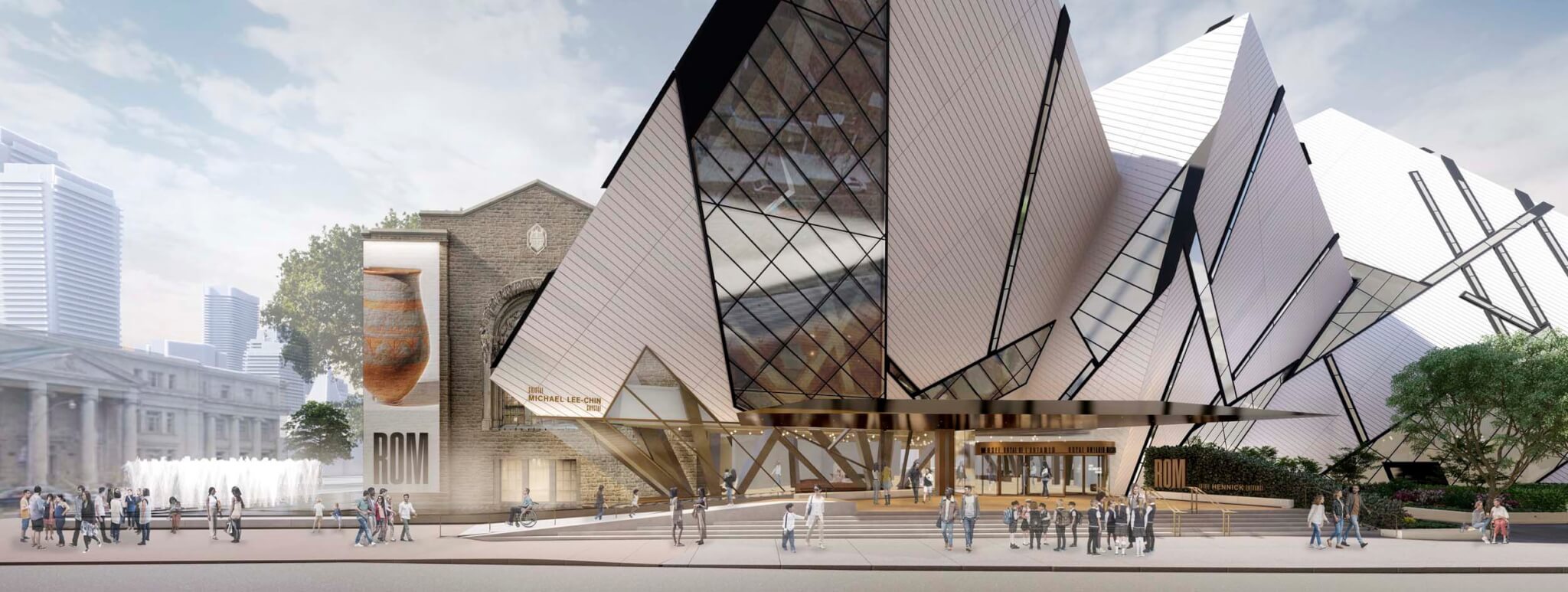
On the Bloor Street facade a new bronze canopy extends outward from the Studio Libeskind-designed Michael Lee-Chin Crystal building. In renderings, the metallic addition seamlessly blends with its counterpart; an amalgamation of angles and shard-like forms.
Visitors entering from Bloor Street will soon be met by a brightly lit lobby. An oculus planned for its center frames upward views into exhibition spaces.
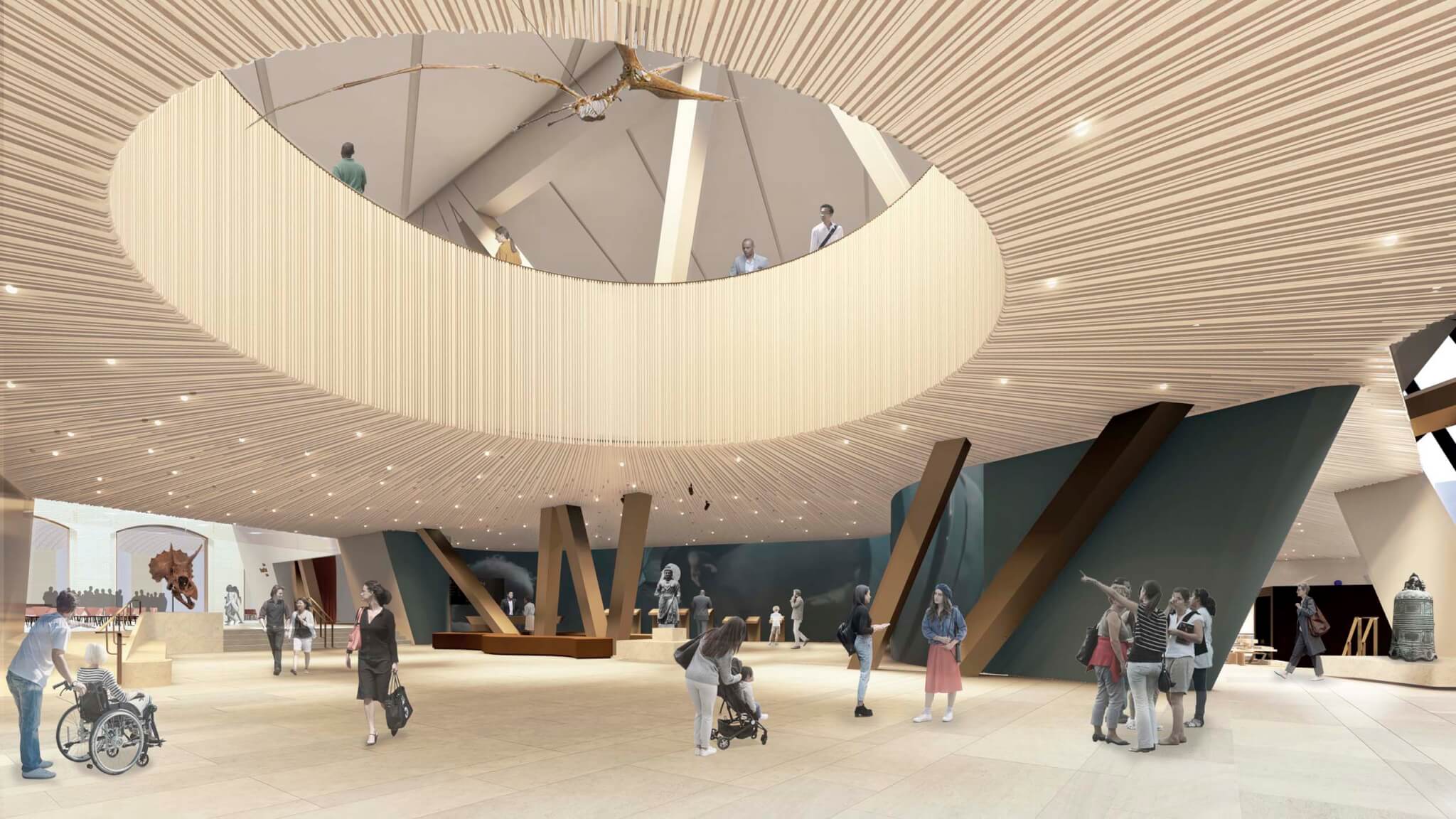
“We’re going to bring daylight and views deep inside and create porous connections with Bloor Street, within the ground floor public spaces, and the galleries themselves,” Siamak Hariri, founding partner of Hariri Pontarini Architects, said in a statement.
Just beyond the improved lobby, visitors will gather in the new Hennick Commons. The four-story hall will be flexibly designed to accommodate performance and speaking events as well as a cafe. The piece-de-resistance of the atrium is the sculptural circulation volume, a three-story construction of stairways, landings, and ramps. It acts as a hinge between the historic and contemporary components of the museum. Its bronze finish and glass frontage matches that of the diagrid glass ceiling above and, similarly, the canopy extension just outside.
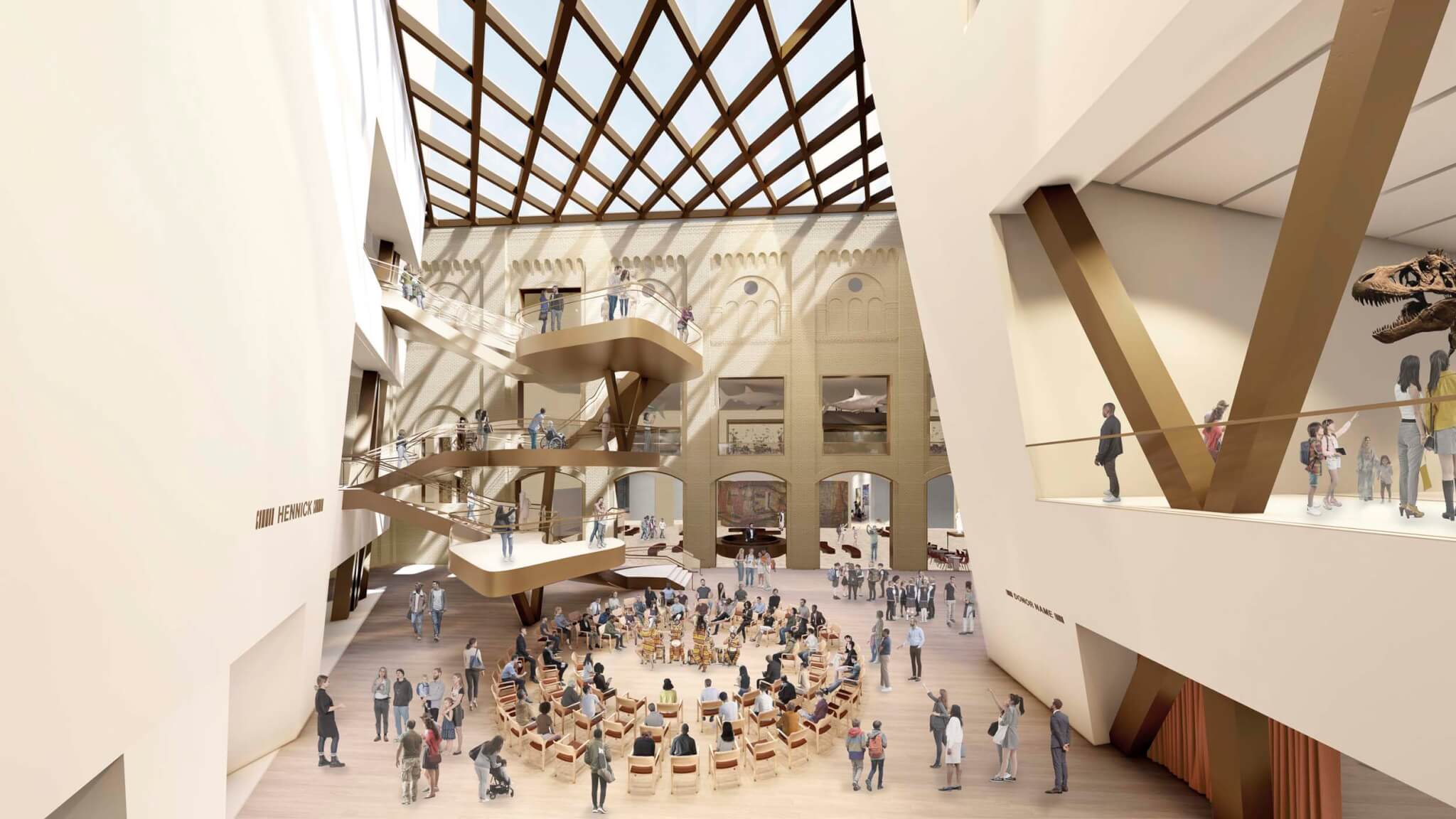
In Hennick Commons, new openings cut into the walls of both the existing historic and Crystal buildings offer glimpses into surrounding exhibition spaces.
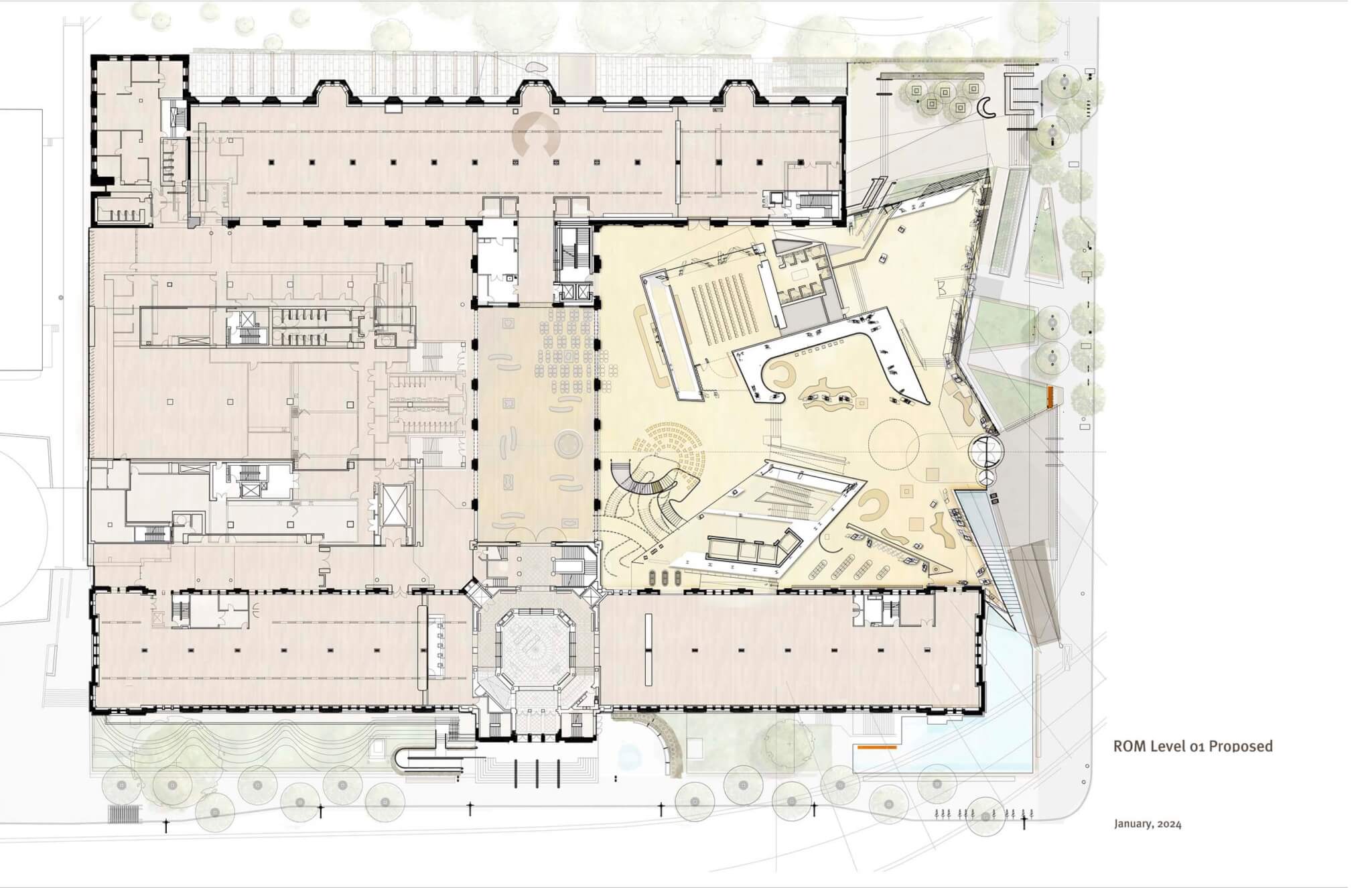
Construction on the project will be underway soon and is slated to take three years to complete. Upon its completion, the museum will keep the ground-floor admission-free and open to the public. The renovation is funded through private means and was mobilized thanks to $50 million from the Hennick Family Foundation, the largest in the museum’s history.


%20(1).jpg)
